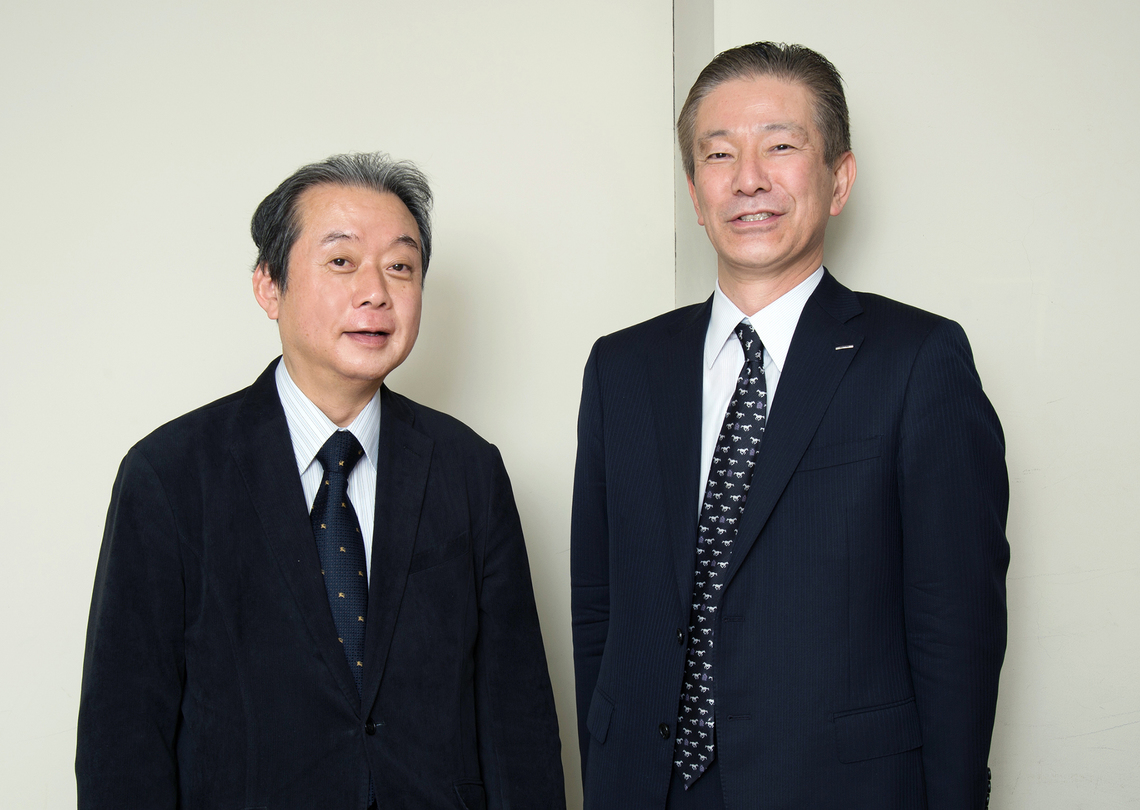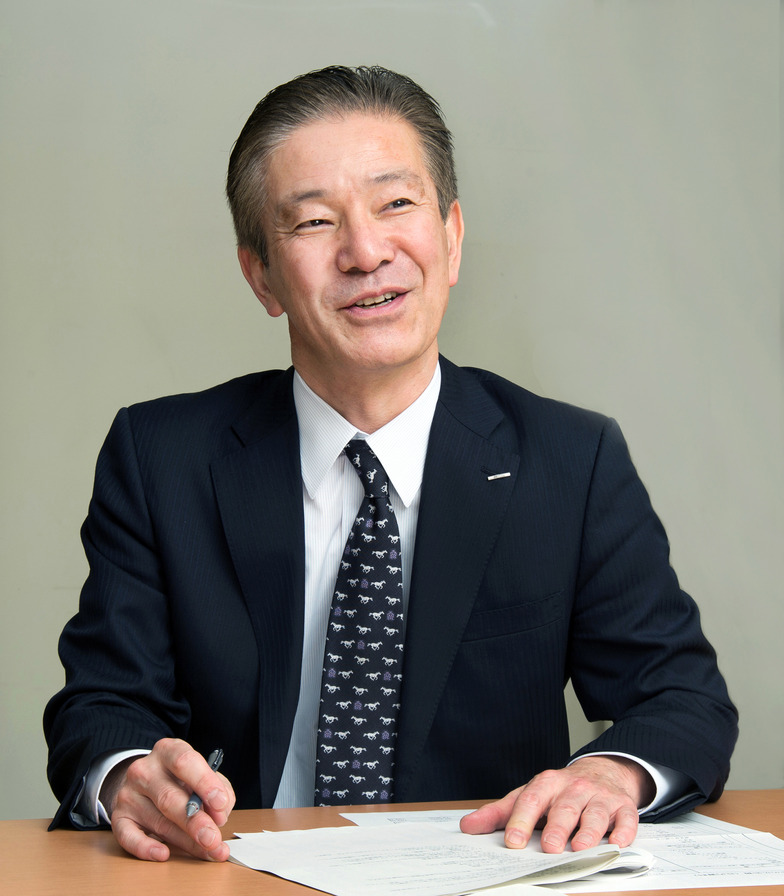Steady Growth Reflects Rising Consumer Spending
Oku: Advertising expenditure in 2014 exceeded the previous year for the third consecutive year, reaching 6.1522 trillion yen, a 102.9% increase year-on-year. Notably, internet advertising expenditure surpassed 1 trillion yen for the first time, indicating relatively steady overall growth. How do you interpret these figures?
Hashimoto: I believe this is a clear reflection of the effects of Abenomics, or rather, the continued weak yen due to monetary easing, which led to strong performance for many companies, particularly in export industries. Furthermore, the anticipated postponement of the consumption tax hike to 10% likely sustained expectations for consumption beyond the fall, contributing to continued robust advertising spending.
On the consumer side, the employment situation has significantly improved, and the unemployment rate is at its lowest level in over a decade. Expectations for base pay increases this spring are also rising, suggesting a glimmer of hope for improved consumption. Personally, I recall seeing numerous advertisements related to major sporting events like the Sochi Olympics and the World Cup across various media. I suspect these impressions are directly reflected in the figures.
Oku: Next, I'd like to ask about individual media. First, television media advertising expenditure was ¥1.9564 trillion, a 102.8% year-on-year increase. BS (Broadcast Satellite) performed particularly well, growing significantly at 112.8% year-on-year.
Note that since 2014, television advertising has been categorized as "Television Media (Terrestrial TV and Satellite Media Related)." How would you assess television, which holds the largest share among media?
Hashimoto: Television is the medium most closely linked to corporate performance, and I believe this reflects the strong business results.
As we enter a super-aged society, "money, health, and loneliness" are often called the "3 Ks of anxiety" for the elderly. While BS is performing exceptionally well, advertisements for insurance and health foods were particularly prominent. It seems many ads promoted products addressing consumer concerns. Additionally, BS has the advantage of allowing broadcasters to insert commercials without strict time constraints, so ads tied to sports event programming likely also performed well.
Another area worth noting is smartphone-related advertising. While new model launches are a given, information curation services have recently gained prominence, increasing opportunities to see commercials. Going forward, we may see more cross-platform advertising exposure – promoting traditional media ads on emerging platforms and vice versa.
Television possesses functions that cannot be replaced by other media.
Oku: I believe the increased proportion of spot ads stems from a desire to attract members through smartphone-based services. The fact that emerging companies are placing ads on television, a traditional medium, due to its reach is a highly noteworthy point. It seems we are entering an era where traditional and emerging media are increasingly integrated into public relations strategies.
Professor Hashimoto, in your area of expertise regarding people's information consumption behavior, what changes are you observing regarding television?
Hashimoto: Long-term viewing time among teens has been stagnant. However, since 2012, we haven't seen a significant decline among those in their 20s and older. Furthermore, tracking surveys by generation show, for example, that those in their 30s in 2005 are now in their 40s, and their viewing time has recovered. In other words, viewing time increases from the 20s and 30s onwards, and continues to rise into the 40s. Therefore, it seems viewing time doesn't consistently decline within a single generation.
Oku: It's said that viewing time and internet usage time are proportional to time spent at home. But is time spent at home actually increasing?
Hashimoto: Generally, when the economy is strong, time spent at home decreases, so TV viewing also declines. Conversely, during recessions, TV viewing increases. Media use at home is, simply put, a matter of allocating free time. Certainly, some of that time has been taken by the internet. Since 2005, when new services like YouTube, NicoNico Douga, Facebook, and LINE emerged, usage surged. But recently, there hasn't been anything particularly novel. PC usage is on the decline, and I believe the internet has reached saturation. Therefore, the current relationship between television and the internet is in a stable phase, or rather, a state of equilibrium. I think this situation will continue for some time.
Oku: Given the current economic upturn and low unemployment, people tend to spend less time at home. Yet television is holding its own in this environment. Where do you see television's significance and unique strengths?
Hashimoto: Television's immediacy surpasses other media, and its reliability is high. Television possesses several functions that cannot be replaced by other media. First is the so-called agenda-setting effect – the ability to understand "what is important in the world right now" and "what people consider important." This function, which allows you to confirm "Oh, this news is important in the world right now," is crucial. Second is the vicarious experience effect. There's the enjoyment unique to a large screen, like empathizing with a drama's protagonist or savoring the scenery in travel programs. The sense of presence in sports or music programs is also something only television can deliver.
Furthermore, not everyone actively seeks information; seeking solace is also a major purpose of media consumption. From this perspective, television is a medium with a very high soothing effect.
Furthermore, a joint survey with Dentsu Inc. revealed a significant amount of "multitasking viewing" alongside mobile devices. This suggests the growing trend of social viewing, where viewers are inspired by TV programs to send comments. The synergistic effect between TV and mobile will likely grow even stronger in the future.
Newspapers offer serendipity, magazines have a unique depth of flavor
Oku: With the proliferation of mobile devices, the combination of television and mobile is enabling interactivity. I believe this is driving the revitalization of both media. Now, I'd like to ask about newspapers. Newspaper advertising revenue was 605.7 billion yen, down 1.8% year-on-year.
Hashimoto: It's regrettable that newspaper advertising revenue has declined slightly. While some events since last summer raised questions about credibility in certain quarters, newspapers' trustworthiness has not diminished since then. The image of newspapers as the most reliable source of information remains unshaken.
I myself love newspapers. Reading a newspaper cover to cover always brings new discoveries – "Oh, this is happening?" or "So that's how the world is." It's what you might call the serendipity effect; I experience that daily.
Some older adults might say, "I get my news online," but they don't just want to get the news. If the sentiment "I learned so much from newspapers back in the day" grows stronger, wouldn't the value of newspapers as a source of knowledge for the elderly increase even more? On the other hand, among younger generations, the educational value of newspapers is being reevaluated in elementary, junior high, and high schools, and the trend of "reading newspapers" as part of university entrance exam preparation is becoming established, right? Considering this, I believe we can also expect growth in newspaper subscription rates or reading time among younger demographics going forward.
Newspapers possess unmatched reporting and editorial capabilities. As their digital transformation efforts gain momentum, I expect new value will emerge.
Oku: Rather than just looking up specific things online, the impact of articles or ads you happen to see in the comprehensive print layout, or the effect of something that just clicks with you, is incredibly powerful. Also, especially for younger readers, efforts toward digitization are urgently needed at the same time.
Now, regarding magazines, advertising revenue was 250 billion yen, unchanged from the previous year. Sectors like "Fashion & Accessories" and "Cosmetics & Toiletries" remained robust.
Hashimoto: I can understand why magazine advertising spending hasn't declined. Personally, I read various magazines when visiting hospitals or during commutes. Magazine ads for shops, cuisine, or alcohol have this unique quality – a sense of temporal suspension, making you want to linger in that world. Even with food, great photography has the power to make you think, "This really looks delicious."
That kind of appeal doesn't translate well into numbers, so it doesn't show up in reading time metrics. But I believe magazines have a flavor and effect that other media simply can't replicate.










